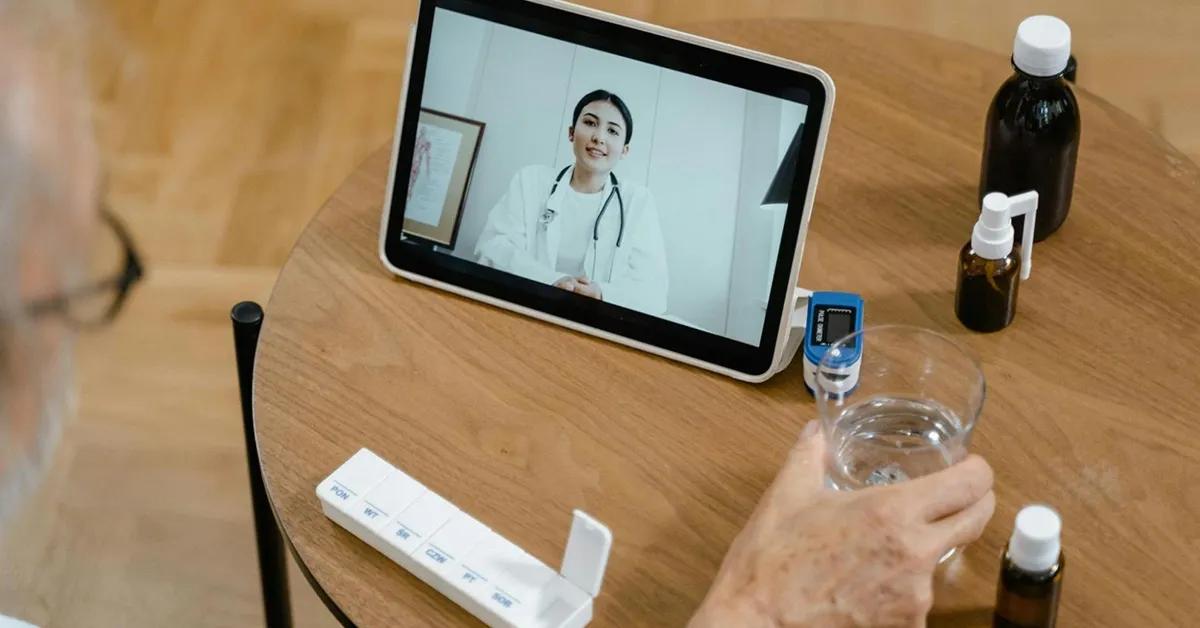The digital healthcare industry is a rapidly evolving sector that integrates digital technologies with healthcare services to improve patient care, optimize processes, and enhance access to medical services. By merging technology with medical science, digital healthcare aims to make healthcare services more efficient, accurate, and widely accessible, transforming how patients and providers experience medical care.
From virtual doctor appointments to wearable health trackers and advanced diagnostic AI tools, digital healthcare is transforming traditional medicine into a more accessible, personalized, and efficient experience. This field encloses a wide range of technologies, including telemedicine, electronic health records (EHRs), mobile health apps, and connected medical devices. Each one plays a vital role in supporting patients, doctors, and healthcare providers in improving health outcomes and making care more convenient and responsive.
Testing digital healthcare apps comes with unique challenges, as these tools must meet high standards for accuracy, security, and reliability to protect patient safety and privacy. In this article, we will focus on functional testing and explore why it’s essential for ensuring the safety, accuracy, and reliability of digital healthcare apps.
TL;DR
30-second summary
Functional testing is a critical component of digital healthcare software development that verifies each feature of an application works as intended. This is crucial for ensuring patient safety, maintaining data privacy, and complying with stringent regulations like HIPAA and GDPR. By simulating real user interactions, functional testing helps to build trust with stakeholders, enhance the user experience, and support high-quality patient care. It is an essential process for mitigating risks and liability by catching potential issues, such as incorrect diagnostic outputs or system outages, early in the development lifecycle.
- The Role of Functional Testing: Functional testing ensures every feature in a digital healthcare application works as intended, supporting reliable performance of core tasks.
- Protecting Patient Safety and Care Quality: It’s essential for reducing errors in critical functions like diagnostics, prescriptions, and alerts—directly impacting patient safety and care standards.
- Compliance and Security: Functional testing helps meet regulatory requirements such as HIPAA and GDPR, safeguarding sensitive patient data and reinforcing user trust.
- Reducing Risks and Liability: By catching issues early, functional testing minimizes the chance of major problems like data breaches or outages, reducing legal and financial exposure.
- A Structured Approach: A strong functional testing process includes requirement analysis, detailed test case creation, secure execution, and thorough documentation.
What is functional testing?
Functional testing is a type of software testing that ensures each feature of an application works as expected, following the specified requirements. It focuses on verifying the software's actions rather than the underlying code, which means testers simulate real user interactions with the application.
In contrast to other testing methods, such as performance testing, which focuses on the app’s ability to handle user load, or security testing, which targets potential data vulnerabilities, functional testing focuses on whether each feature of the app works as intended. Functional testing doesn’t just check if each feature works; it makes sure that every action in the app leads to the right results for users.
Why is functional testing in digital healthcare important?
In digital healthcare, functional testing plays a particularly crucial role. Healthcare apps deal with sensitive information and offer vital medical features, so even small mistakes can cause serious problems like wrong diagnoses, incorrect medication reminders, or data breaches. Functional testing ensures these apps are not only easy to use but also accurate and dependable. By checking that everything works correctly, functional testing helps keep patients safe, builds trust in digital tools, and makes sure the app follows healthcare guidelines.

Let’s break down 7 fundamental reasons why functional testing is important in the digital healthcare industry.
1. Ensures patient safety
Digital healthcare apps often manage sensitive patient data and provide clinical functionalities such as diagnostics, prescriptions, and monitoring. Functional testing ensures these features work correctly, minimizing the risk of errors that could impact patient health.
2. Ensures regulatory compliance
The healthcare industry is highly regulated, with standards such as HIPAA, GDPR, and FDA policy and guidelines for medical software. Functional testing validates that the application complies with these regulations, reducing the risk of legal repercussions and penalties.
3. Builds stakeholder and client trust
Reliable functionality is essential to gain and maintain the trust of healthcare providers, patients, and stakeholders. Functional testing demonstrates the app’s reliability and accuracy, reassuring clients and stakeholders that the app meets industry standards and provides safe, effective services.
4. Enhances user experience
Functional testing improves the app's usability and reliability, leading to a better user experience for both patients and healthcare providers. A smooth, functional user interface is especially important in healthcare, where quick, intuitive access to information is essential.
5. Ensures data privacy and security
Functional testing ensures that privacy features work as intended, protecting sensitive medical and personal data from unauthorized access. This is vital for maintaining user trust and adhering to privacy policies.
6. Supports high-quality patient care
A well-tested healthcare app provides consistent and reliable performance, supporting medical staff and patients in achieving better health outcomes. Functional testing ensures that app functionalities, such as alerts, data collection, and patient interactions, work seamlessly to support effective care. For virtual medical consultations, testing video and audio quality is imperative to ensure medical professionals have the proper tools to give accurate diagnoses.
7. Reduces risk and liability
Errors in healthcare applications can lead to misdiagnoses or incorrect treatments. Functional testing identifies and addresses potential issues early in development, reducing the risk of liability for developers and healthcare providers.

How to set up your functional testing process
Let’s walk through the process of functional testing which involves several key steps to ensure that each feature of a digital healthcare app operates correctly and meets all requirements:
- Analyze the requirements. Start by understanding the app’s requirements, detailing what each feature is expected to do, such as patient record management, appointment scheduling, or notifications for medication.
- Create test cases. Write test cases based on these requirements. Each test case specifies steps to perform a particular function and the expected outcome, covering common scenarios as well as edge cases.
- Set up the test environment. Set up a secure test environment that mirrors the production environment as closely as possible. In healthcare, this often includes using anonymized or synthetic data to maintain patient privacy while mimicking real-life conditions.
- Execute the tests. Execute the test cases, recording whether each feature behaves as expected. This step may involve both manual and automated testing to verify functionality across different conditions.
- Log defects and re-run tests. Log any bugs or discrepancies you’ve found, and report them to the development team to resolve them. Once fixed, re-execute tests to confirm the issues are resolved.
- Validate the test and write a report. Finally, prepare a test report, summarizing the results and validating if the application meets functional requirements. Test documentation is critical for regulatory compliance and future updates.
Examples of critical issues in digital healthcare
Real-life examples show us how critical bugs in healthcare apps can lead to serious consequences, ranging from incorrect diagnoses to privacy breaches. Here are a few notable cases that highlight the importance of rigorous functional testing in the digital healthcare industry:
Incorrect dosage recommendations
A bug in a popular healthcare app led to incorrect dosage calculations for medications, impacting patients with chronic conditions. For example, in a diabetes management app, miscalculations in insulin dosages resulted in patients receiving either too much or too little insulin, causing adverse health effects like hypoglycemia (low blood sugar) or hyperglycemia (high blood sugar). Such miscalculations can be life-threatening, especially for patients who rely on these apps for critical health decisions.
Misdiagnosis due to inaccurate symptom tracking
In another instance, a symptom-tracking app failed to update its diagnostic algorithm correctly, leading to incorrect or delayed diagnoses for certain conditions. This bug affected people using the app for preliminary medical advice, giving some patients false assurances and causing others unnecessary worry. Such errors can delay treatment for serious conditions or lead to patient anxiety and misinformed health choices.
Data breaches and unauthorized access
A significant bug in an electronic health record (EHR) system allowed unauthorized users to access private patient information. Due to a flaw in the authentication mechanism, some users were able to view, and in some cases, alter, other patients' records. This not only exposed sensitive patient data but also risked the integrity of patient records, which could potentially lead to incorrect treatments or medical decisions.
Incorrect medical alerts and notifications
One healthcare app had a bug where medication reminders were incorrectly timed, leading patients to miss doses or take medication at the wrong times. For patients with complex medication schedules or those taking medications with narrow therapeutic windows, incorrect timing can significantly affect treatment outcomes, risking overdoses or underdoses.
System outages in telemedicine apps
During the COVID-19 pandemic, a few telemedicine platforms experienced major outages due to bugs in handling high user loads. This left patients unable to reach healthcare providers, delaying critical consultations and leading to a temporary halt in remote care for some people, including those with serious health conditions needing timely advice.
The bottom line
Given the sensitive nature of healthcare data and the critical role these apps play in patient care, functional testing helps prevent issues like incorrect diagnoses, data corruption, and system crashes. By validating each component—whether it's appointment scheduling, data entry, or medical device integration—functional testing not only improves the app's performance but also ensures regulatory compliance, data integrity, and a positive user experience.
As the demand for healthcare apps continues to grow, the need for rigorous testing, especially functional testing, will become even more critical to ensure safety and reliability. Now is the time to implement functional testing into your healthcare product to meet the rising expectations and safeguard both patient trust and the quality of your healthcare solutions.
FAQ
Most common questions
What is functional testing in digital healthcare?
Functional testing is a type of software testing that checks if all features of a digital healthcare application, such as diagnostics or patient data portals, work correctly according to their requirements. It simulates real user behavior to ensure the application provides accurate results.
Why is functional testing so important for digital healthcare apps?
It is critically important for digital healthcare apps to ensure patient safety and data privacy. A bug in a healthcare app could lead to serious consequences, such as an incorrect prescription or a data breach, making thorough functional testing essential.
How does functional testing help with regulatory compliance?
Functional testing verifies that an application adheres to industry regulations like HIPAA and GDPR, which are designed to protect patient information and ensure privacy. Test documentation from this process is often required to prove compliance.
What are some examples of issues functional testing can prevent?
Functional testing can prevent critical issues such as incorrect medication dosage recommendations, misdiagnoses from faulty features, security vulnerabilities that could lead to data breaches, and system outages that disrupt patient care.
Does your healthcare app meet all the requirements?
Get in touch to learn how our functional testing services for healthcare software can help you increase user satisfaction, enhance doctor-patient communication, and reinforce trust in the performance of your application.




